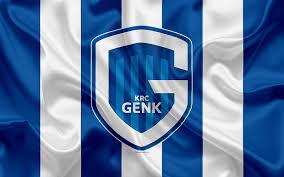In the vibrant landscape of European football, Genk FC stands out as a remarkable story of ambition, talent cultivation, and relentless pursuit of success. Over recent decades, this Belgian club has transformed from a modest team into a formidable contender both domestically and on the continental stage. Their journey is characterized by strategic management, a prolific youth academy, and an attacking brand of football that resonates with fans worldwide. As Belgian football continues to evolve, Genk FC’s rise embodies the nation’s growing influence in nurturing elite players and competing against traditional giants. This blog post explores how Genk FC became such a compelling force, analyzing their history, development strategies, notable achievements, and future prospects.
The Historical Roots and Evolution of Genk FC
Understanding the ascent of Genk FC requires a deep dive into their rich and multifaceted history. From humble beginnings to becoming a powerhouse in Belgian football, the club’s evolution is a testament to resilience, innovation, and a strong community spirit anchoring their identity RR88.
The Merger That Sparked a Dream
Genk FC was born in 1988 through the merger of two local Limburg clubs: Waterschei Thor and KFC Winterslag. At that time, neither side had significant national or international impact, but their unification signified a bold step toward building something more sustainable and competitive.
This merger was more than just administrative—it combined communities, fan bases, and cultures, creating a new identity rooted in diversity and ambition. It symbolized hope for a region seeking representation at the highest level. Initially, skepticism surrounded this union, yet within a few years, the results began to show. The management focused on consolidation, establishing infrastructure, and developing a clear sporting vision.
In my view, the merger was a masterstroke of strategic foresight. Instead of persisting as small rivals, pooling resources allowed them to punch above their weight. It’s a model other smaller clubs have looked to emulate, proving that collaboration can sometimes be more potent than competition.
Early Struggles and Rapid Growth
The initial seasons after the merger were marked by fluctuating performances. Genk FC oscillated between divisions, facing financial constraints and battling internal instability common in newly fused entities. However, by the mid-1990s, progress accelerated when key investments were made into facilities and youth development.
This period saw the club solidify its presence in Belgium’s top flight. Tactical discipline, coupled with pragmatic recruitment, helped establish Genk as a steady competitor. They weren’t immediate title contenders, but the foundations for future successes were clearly laid during these years.
What stands out here is Genk FC’s patience and perseverance—qualities often missing in modern football’s quick-fix mentality. They avoided rash decisions, instead focusing on incremental progress which ultimately yielded sustainable growth.
The Emergence of a Contender
By the late 1990s, Genk FC had matured into a genuine challenger. In 1998-99, they clinched their first Belgian First Division title—a watershed moment validating their comprehensive approach. This success propelled them onto the European stage, introducing the world to Belgian football’s emerging might.
Their maiden championship was built on an exciting attacking style and standout performers who balanced youthful exuberance with experienced leadership. The triumph united the city behind their team and sparked greater investment in the club’s infrastructure and scouting networks.
From a personal perspective, this phase epitomizes the reward of long-term planning. It validated the idea that regional clubs, with smart execution and community backing, could disrupt traditional hierarchies in domestic football.
